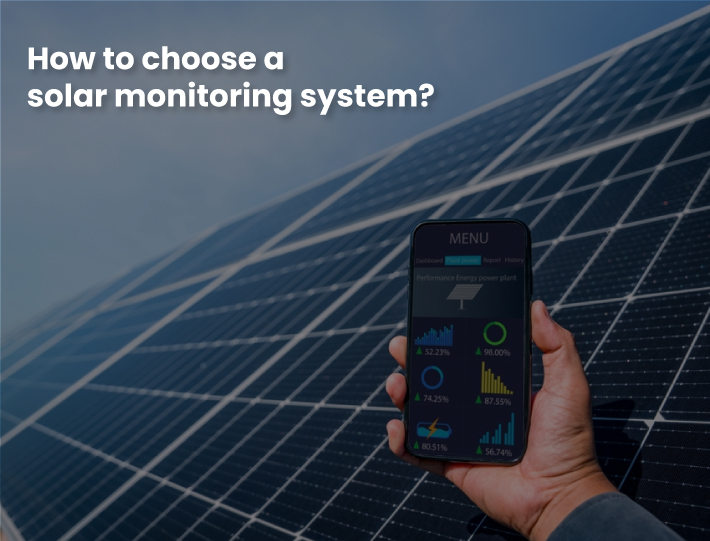How to choose a solar monitoring system?
A solar monitoring system can assist you in evaluating the effectiveness of your photovoltaic system. It provides statistics on energy use and generation, energy optimization, and damage to your solar system, among other things. It's critical to monitor your solar system in some way — without monitoring, it's difficult to determine whether your solar panels are performing at their optimal level.
Why is it critical to understand how to monitor one's own system?
While many solar installers employ a monitoring service, they are often limited to looking for "red flags" indicating a significant failure. Smaller issues may go unnoticed by the installer, who is likely monitoring hundreds of systems. Occasionally, the red signal does not even appear to the firm until there is a serious problem. It is your system; no one else will be concerned with it as much as you are.
Is my system monitoring each individual panel or the entire system?
Many of the more recent systems have the best solar monitoring system that enables individual panel monitoring. These methods make it quite simple to identify a malfunctioning solar panel, as its output will be much lower than the others.
Other systems, particularly older ones, report simply the system's overall performance, not the performance of each individual panel (this is referred to as "string inverters" technology). Occasionally, these older systems lack an intuitive monitoring method. Due of the difficulty of detecting an issue with these systems, we recommend keeping a constant check on your statement. Compare your monthly power bill to last year's bill on a regular basis. If your bill experiences a significant increase, you may have a problem.
Monitoring Systems Are Increasingly Accurate
Previously, consumers had to make do with the best solar monitoring system -wide performance monitoring. Today, they may obtain more detailed viewpoints through the use of gear that shows essential features at smaller scales.
Examine Solar Panels for Shade and Dust
Solar monitoring systems perform well when they can absorb all of the sun's beams. They will operate less effectively if they are hindered in any manner - whether by shade or dust. When your solar system was constructed, the experts almost certainly positioned your panels in the optimal location. However, after a few years, new tree growth may shade a portion or all of your solar panels.
If you see new growth, contact your arborist to arrange for the removal of the branches. Monitor your solar production for approximately a week thereafter to determine whether it rises or if another factor is causing the reduction in energy production.
If your panels are positioned optimally to absorb sunlight, it is conceivable that dirt, dust, or debris is interfering with their energy production. Solar panel cleaning is simple and only has to be done a few times a year. It's as simple as rinsing each panel with your yard hose.
If you are unable to reach your panels with a hose, we recommend contacting a professional solar cleaning firm; you should never climb on your roof to clean your panels. Keeping an eye on your solar panel production will assist you in identifying any problems early and maintaining the health of your solar system. Finding difficulties that might affect your output is straightforward if you know what to look for.

